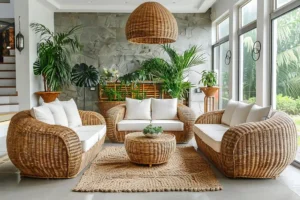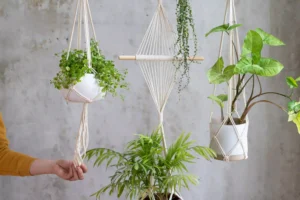Hanging ivy plants indoors is an easy way to add life and a natural feel to your home.
No matter if your style is modern, boho, or Scandinavian, ivy brings movement and softness to any room.
Its trailing vines, full leaves, and easy care make it popular in homes around the world.
If you want to add some natural charm, these ideas and tips will help you get started.
Table of Contents
What Makes Hanging Ivy Plants Indoor So Popular Right Now?
Ivy is popular because it looks great and is easy to care for. Its soft vines add texture to empty corners, give depth to simple rooms, and soften sharp lines in modern spaces.
As more people add plants indoors, ivy stands out for being both useful and attractive. People like how it brings calm and warmth to living rooms, bedrooms, offices, and small apartments, especially when used as vertical greenery to save space.
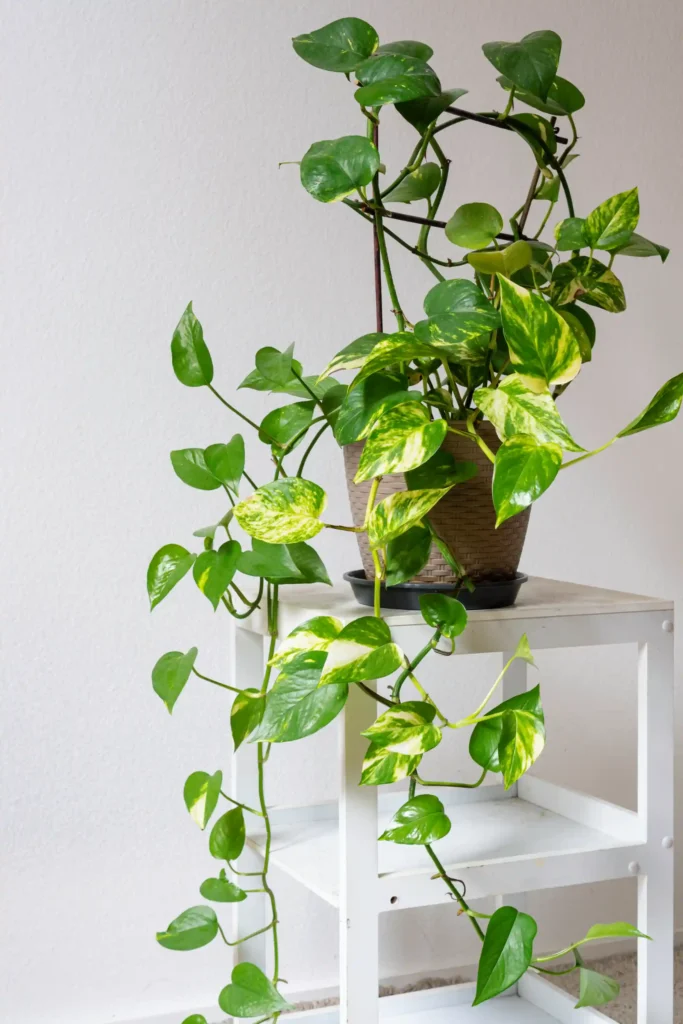
Best Places to Hang Ivy Indoors for Maximum Impact
Placing your ivy in the right spot helps it grow well and makes your home look more interesting. Some good places are:
- Window corners that receive indirect light
- Floating shelves where vines can trail naturally
- Kitchen nooks that need a soft touch
- Bathroom shelves with added humidity
- Ceiling hooks above seating areas
- Bedroom corners for a cozy, layered look
Try hanging planters at different heights for more variety. You can also let the vines trail over bookcases or cabinets for a cozy, stylish look.
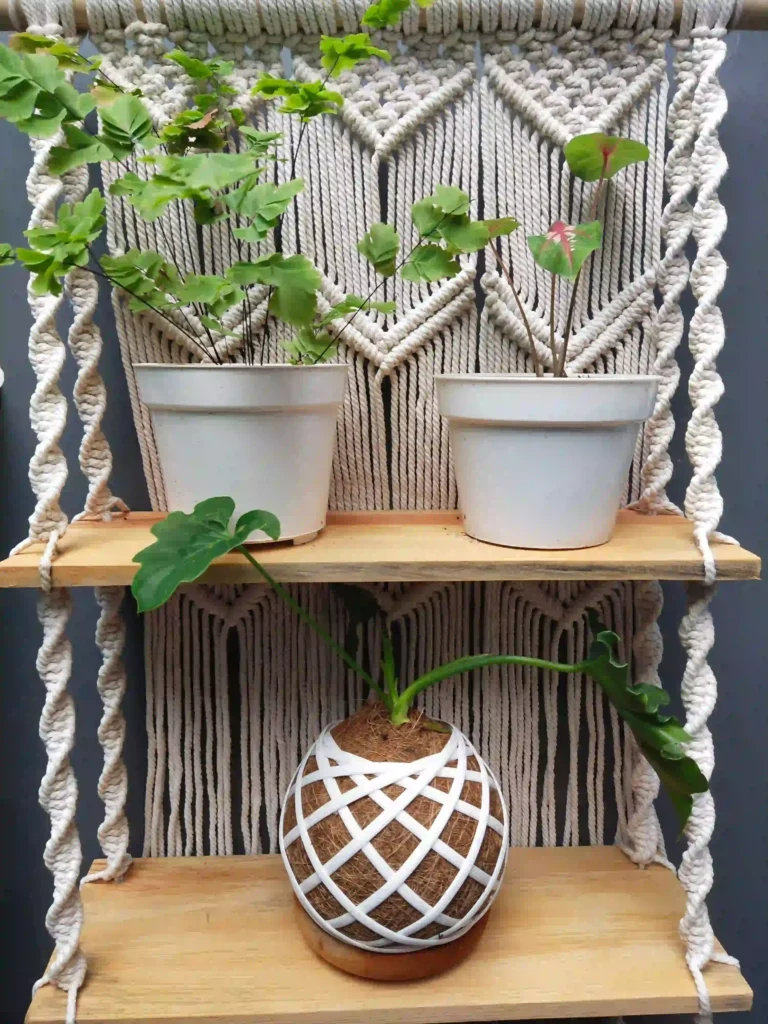
Hanging Ivy Plants Indoor Ideas for Small Apartments
In small apartments, plants that grow down instead of out work best, and ivy is a great choice. Hang a pot above your desk to liven up your workspace.
Place a basket near a window to brighten a narrow area. Use wall hooks to make an ivy wall feature that adds style without using floor space. Even one trailing vine can make a small apartment feel larger and more welcoming.

The Best Ivy Varieties to Grow Indoors (Beginner-Friendly)
Many types of ivy grow well indoors, each with its own look and growth style:
- English Ivy (Hedera helix) – Classic, bold green leaves with a strong trailing effect
- Glacier Ivy – Soft green with white variegation, perfect for bright corners
- Pothos Ivy – Super easy, fast-growing, and great for beginners
- Needlepoint Ivy – Delicate leaves that add a soft, airy look
These types of ivy are easy to care for and perfect if you’re new to indoor plants or want something that looks good without much work.
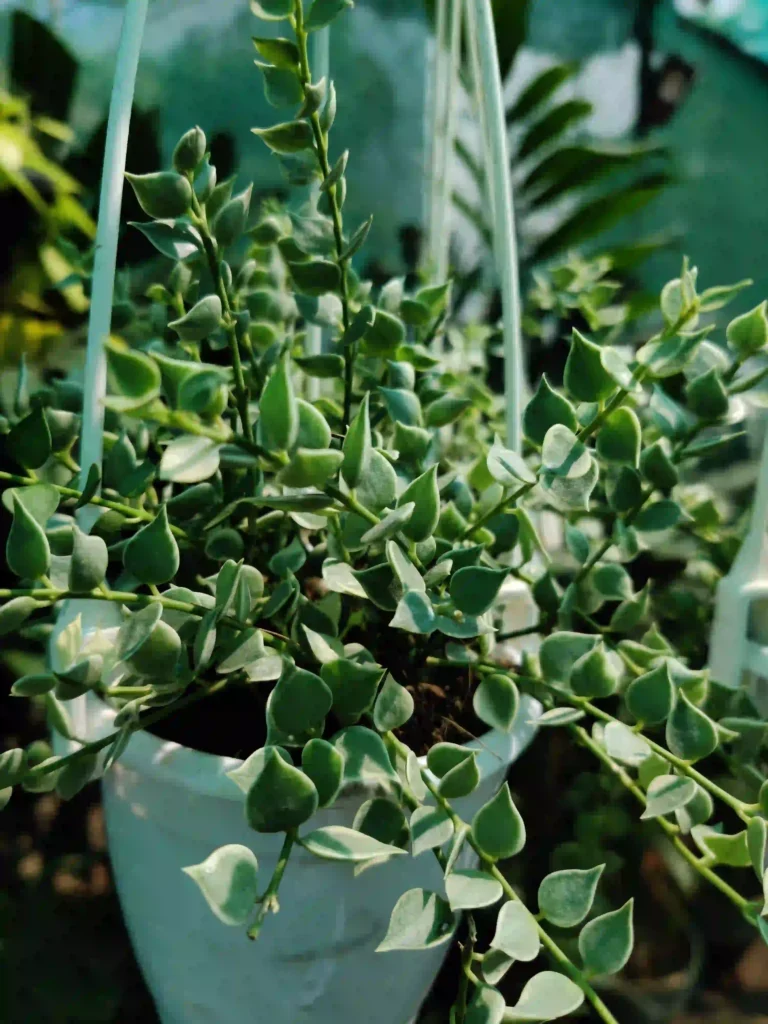
How to Style Ivy With Modern, Minimal & Boho Decor
Ivy fits easily into any decor style. For a boho look, try macramé hangers, woven baskets, or rattan. In minimalist rooms, use a plain ceramic planter for a clean look.
For Scandinavian style, pair natural wood shelves with variegated ivy for a light, airy feel. Mixing different textures with greenery makes your space feel warm and stylish.
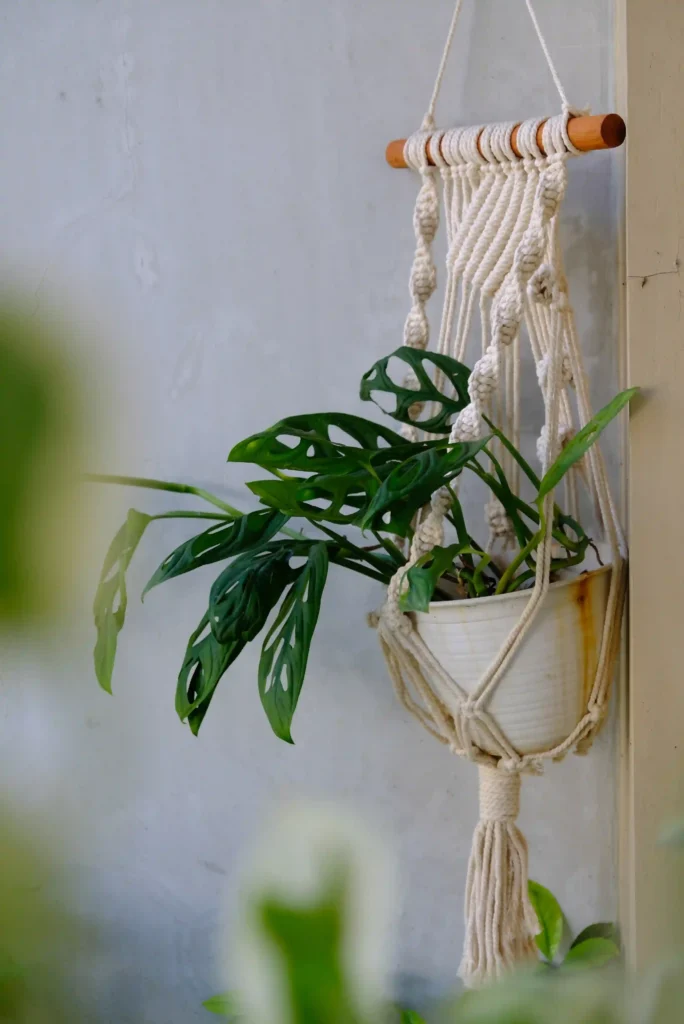
Hanging Ivy Plants Indoor for Better Air Quality
Ivy is not just nice to look at; it also helps clean the air. Many people choose English ivy to reduce some indoor pollutants and freshen up rooms.
It’s a good choice for bedrooms, home offices, and living rooms where cleaner air can help you feel more relaxed and focused.
If you want to go deeper into this topic, you can link to reputable external sources that discuss the air-purifying properties of houseplants.
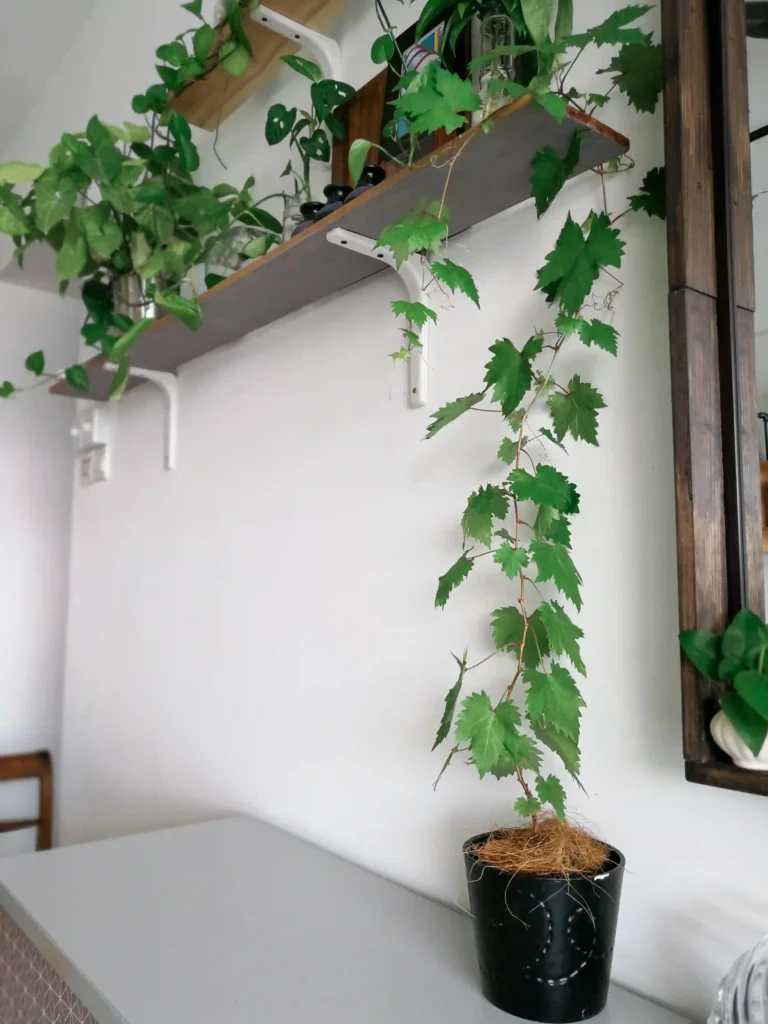
How to Care for Hanging Ivy Plants Indoor (Full Guide)
Ivy is easy to care for once you know what it needs. Here’s what you should do to help your vines grow strong and healthy.
The Right Light for Indoor Ivy (Avoiding Leaf Burn)
Ivy likes bright, indirect light. Place it near a window where the sun doesn’t shine directly on the leaves. Too much sun can burn the plant, while too little light makes the vines thin and weak. A spot with soft, filtered light works best.
Watering, Humidity & Soil Needs
Ivy prefers soil that is a bit moist but not wet. Let the top inch of soil dry before watering again. Since ivy likes humidity, put it near a bathroom window or use a small humidifier to keep the leaves healthy. Always use a potting mix that drains well to prevent root rot.
Preventing Root Rot in Hanging Ivy Baskets
Root rot can occur if the soil is too wet for too long. Make sure your hanging baskets have drainage holes and empty any extra water from trays. If your plant looks droopy even though the soil is wet, take it out, trim any damaged roots, and repot it in fresh soil.
How Often to Repot Indoor Ivy
Repot your ivy every year or two. If you see roots coming out of the drainage holes or the soil dries out quickly, it’s time to repot. New soil gives your plant more nutrients and keeps it healthy and green.
Creative Ways to Display Trailing Ivy Vines
You can style ivy in many ways. Let the vines trail over shelves, wrap them around curtain rods, or let them hang from a tall bookshelf.
Use plant ladders for a layered look, or train the vines along thin wires to make a green curtain wall.
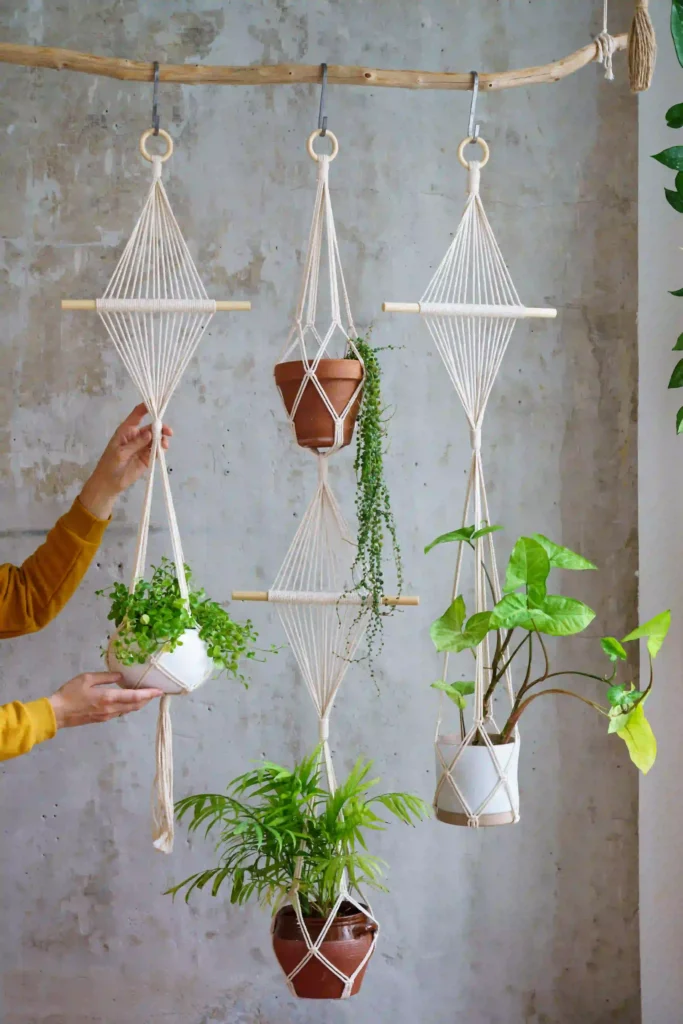
Hanging Planters, Hooks & Baskets That Work Best for Ivy
Choose planters that fit your home’s style. For example, you can use:
- Self-watering hanging planters for busy schedules
- Woven baskets for warm, earthy vibes
- Ceramic planters for modern spaces
- Ceiling hooks for dramatic height
- Wall-mounted planters for tighter spaces
When putting up ceiling hooks, make sure they can hold the weight and use the right anchors to keep your plants safe.

Propagating Ivy Cuttings Indoors (Simple Step-by-Step)
Propagation is a fun way to grow more ivy for free.
Propagation in Water
Place a vine cutting in a clear glass jar with the bottom leaves removed. Set iPropagating ivy is an easy and fun way to get more plants without spending extra money. weeks, and once they’re an inch long, you can plant it in soil.
Propagation in Soil
You can dip the cutting in rooting powder if you want, then plant it in moist soil. Cover it with a humidity dome or plastic bag. Keep the soil slightly damp and place the cutting in a warm, bright spot.
Common Propagation Problems
If the stems get mushy, the water might be too cold or the plant may need more light. If roots don’t grow, change the water or use a cutting with a healthy node.

Is Ivy Safe for Pets? What Every Pet Owner Should Know
English ivy can be toxic to cats and dogs if ingested. If you have playful pets, hang ivy higher or choose pet-friendly alternatives. You can also link to trusted external sources like ASPCA for more safety guidance.
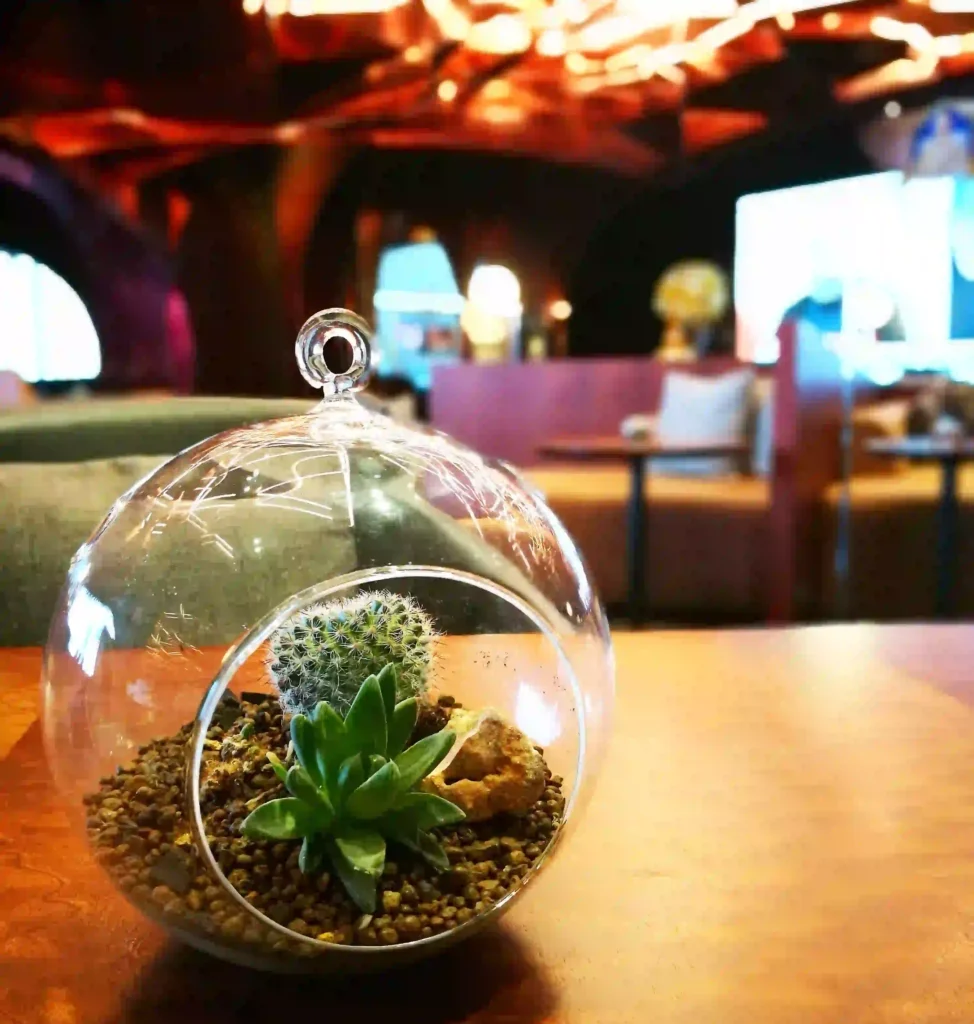
Training Ivy — Basket vs Trellis (Which Is Better Indoors?)
Ivy does well in both baskets and on trellises. Use a hanging basket for a flowing, waterfall look. Use a trellis if you want a more structured or neat appearance on your wall.
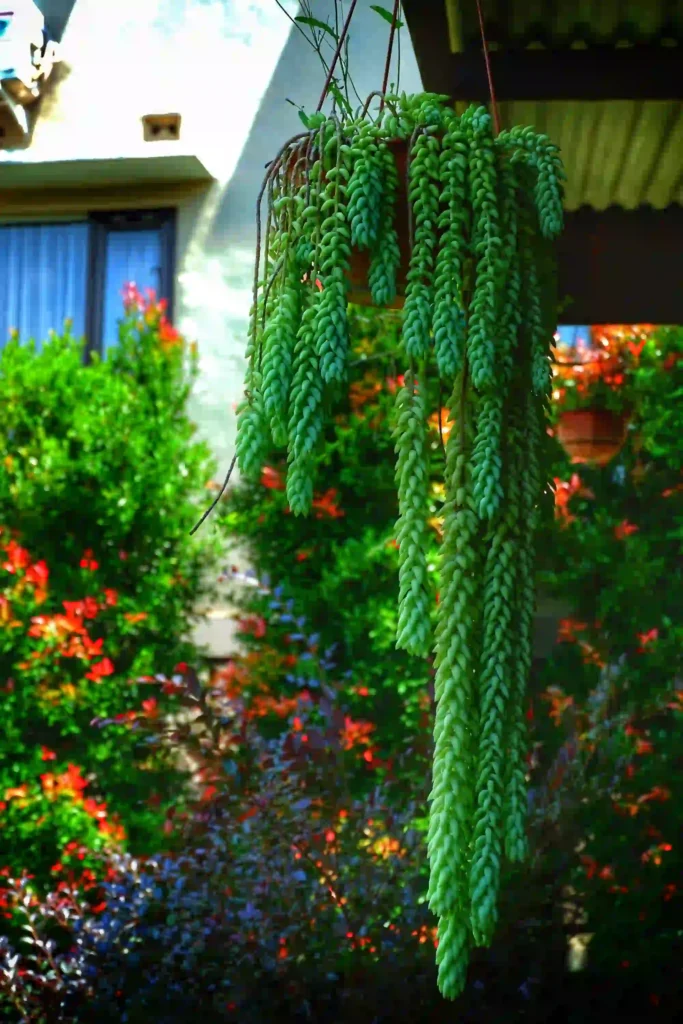
Feng Shui & Energy Flow Benefits of Indoor Ivy
In Feng Shui, plants with flowing shapes like ivy help soften the energy in your home and encourage positive movement. Putting ivy in living rooms, reading corners, or near entryways can improve the flow and make the space feel calmer.

Common Problems With Indoor Ivy (And How to Fix Them)
Yellow Leaves
Usually caused by overwatering. Reduce watering and check drainage.
Leggy Vines
Move your plant to brighter, indirect light.
Pests
Wipe leaves with neem oil or a gentle soap solution.
Dull or Drooping Leaves
Increase humidity or check for root issues.
Final Tips for Styling Hanging Ivy Plants Indoor
Combine ivy with other trailing plants like pothos or philodendron for a fuller look. Use different planter materials such as rattan, bamboo, or ceramic to add style. Trim the vines regularly to keep their shape and encourage new growth.
Recommended Tools & Supplies for Indoor Ivy Care
- Pruning scissors
- Self-watering pots
- Organic fertilizer
- Macramé hangers
- Ceiling hooks & anchors
These basics help you maintain healthy, beautiful vines year-round.
FAQ’s
How fast does ivy grow indoors?
It depends on the type, but most ivy grows steadily if it gets enough light.
Can ivy survive low light?
Ivy can survive in low light, but it won’t do its best. Medium to bright, indirect light works best.
Is indoor ivy hard to maintain?
Not at all. Ivy is one of the most beginner-friendly houseplants.
Can ivy grow in bathrooms?
Yes, ivy that likes humidity will do well in bathrooms.


